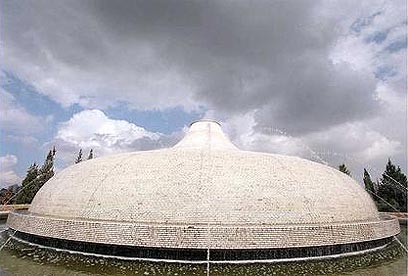
Tale of a poor but happy city
It may not possess Parisian charm, many people have recently fled it, but holy city of Jerusalem keeps its residents happy, optimistic compared to other Israeli cities
Its streets are stricken with poverty. Its image is somber and futureless. Many of its residents have given up on it and left. But despite all that, Jerusalem still puts a smile on its residents’ faces and joy in their hearts, as they profess their love to one of the holiest ancient cities in the world on the day commemorating its unity.
Monday marks 41 years to Jerusalem’s unity. Like every year Jerusalem Day is marked by celebrations: A gala ceremony will be attended by Jerusalem’s Mayor Uri Lupolianski in the Tower of David, a waving of flags parade and a national memorial ceremony for those who fell in the Jerusalem battles will be held at Ammunition Hill.
The Jerusalem Municipality records indicate that the city is flourishing and is a joy to live in: Jerusalem is the most sought after city in Israel to reside in. 11% of home buyers are looking for a home in the capital (a 25% increase compared to 2005.)
The emigration from the city in the past eight years has decreased (8,200 left in 2000 compared to 6,400 in 2006) and many restaurants, coffee shops and bars have been opened. Of Israel’s citizens, Jerusalemites are the happiest, most optimistic ones. The cities rated second and third in the “happiness index” are Tel Aviv and Haifa.
Youngest city in Israel
Tourism rates to Jerusalem are also on the rise, the year 2007 hitting a peak as 875,000 oversees tourists and 350,000 locals visited the capital (the previous peak-year was 2000.)If your impression of Jerusalem is of an “elderly town,” you may be surprised by the data the Jerusalem Municipality provided, showing that almost 53% of the city’s residents are young people no more than 24 years of age. In fact, Jerusalem is the “youngest” city in Israel.
The city houses about 70 cultural institutions and almost 60 museums and hosts some 30 diversified festivals and events every year, above and beyond any other city in Israel.
So if you thought Jerusalem was all ancient walls and stones, you were wrong: apparently, Jerusalem and its vicinity have green areas that span nearly 50,000 Dunams (12500 acres), which is the entire size of Tel Aviv.

Israel Museum Shrine of the Book (Photo: Avi Ohayon, GPO)
The capital’s leading education system in the country includes some 220,000 students. Beit Hakerem school is the oldest institution in Israel, founded 70 years ago.
The past decade saw the establishment of 385 new factories, and the industry sector proceeds have grown by NIS 4.5 billion (approximately $1.4 billion), as the municipality attests to the city’s economic boom.
However, The National Insurance Institute of Israel indicates that almost 40% of the residents (every third family) are below the poverty line and 54% of the city’s children is considered poor.
By late 2007, the city’s population came to 746,000 thousand, out which 489,000 were Jewish. The Arab population makes up 34% of the city’s population, while Jews and others make up 66% of it.










